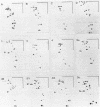Abstract
Bacteriophage T4 induces the synthesis of eight transfer RNAs upon infection of E. coli. The tRNAs are easily detected and resolved into pure species by polyacrylamide gel electrophoresis of RNA labeled with 32P after T4 infection. Two-dimensional fingerprints of RNase T1 products derived from individual gel bands give patterns characteristic of single tRNAs. Furthermore, the T1 digest of each gel band has a single oligonucleotide that contains the minor nucleotides Tp and Ψp, a characteristic feature of all known tRNAs.
Four larger RNAs are also seen in the polyacrylamide gels. Fingerprint and genetic analyses demonstrate that these molecules are related to the tRNAs, but the exact nature of this relationship is not known.
Keywords: RNA sequence analysis, gel electrophoresis, biosynthesis of tRNA, deletion mutation
Full text
PDF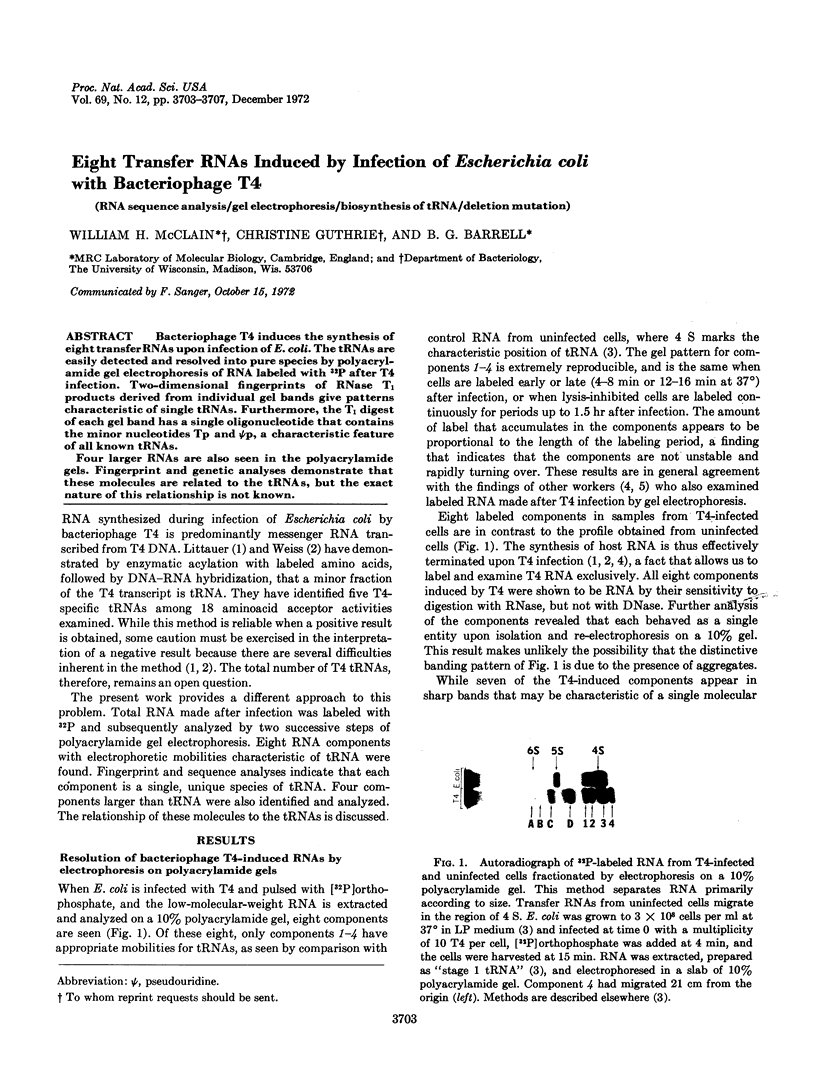
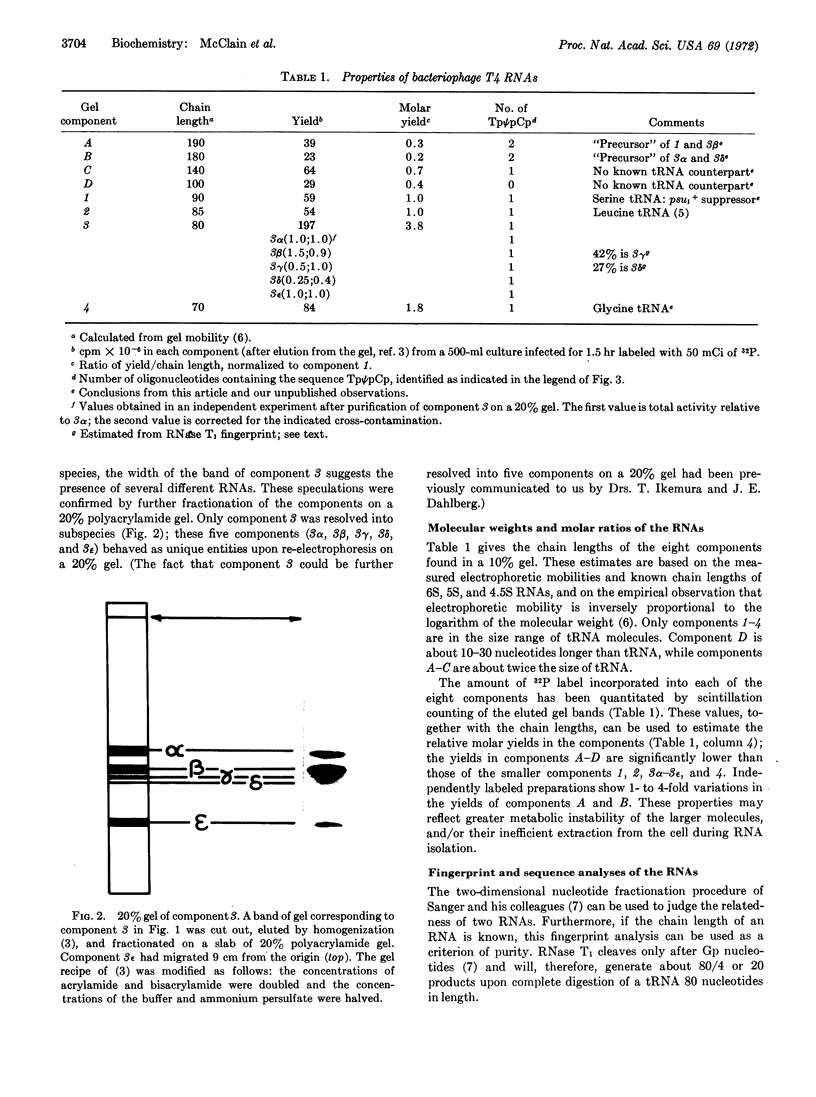
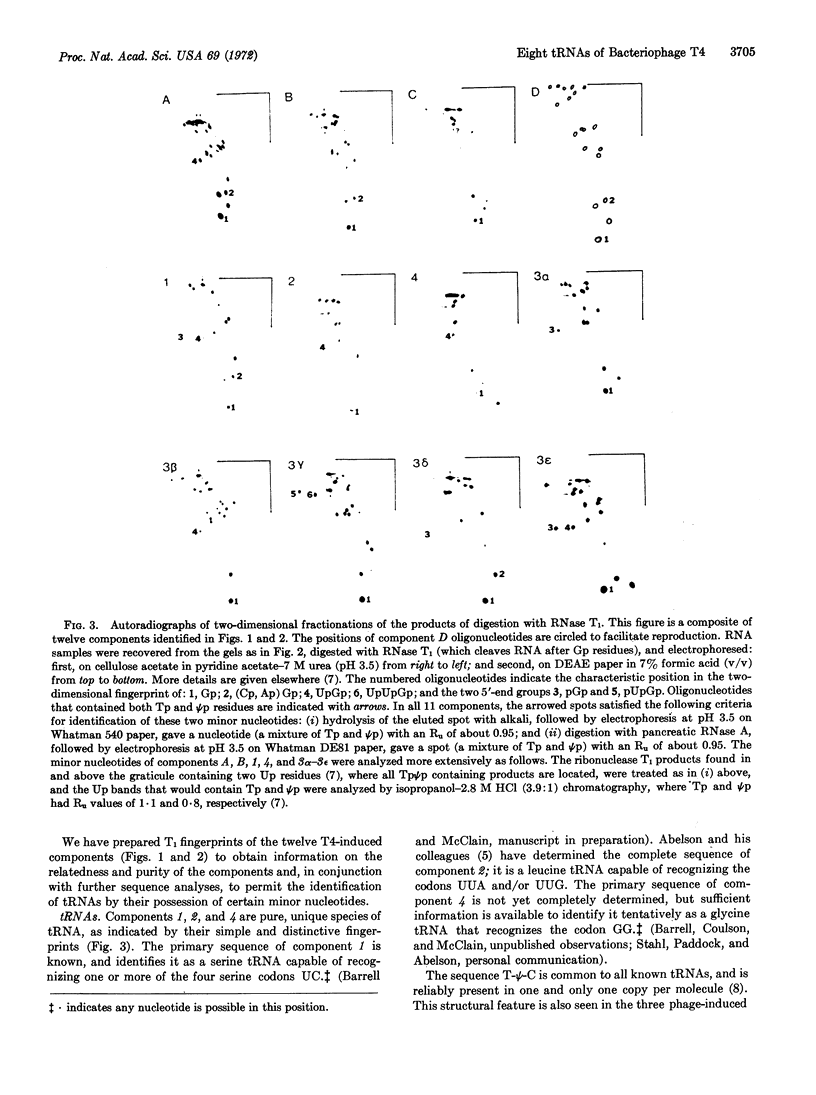
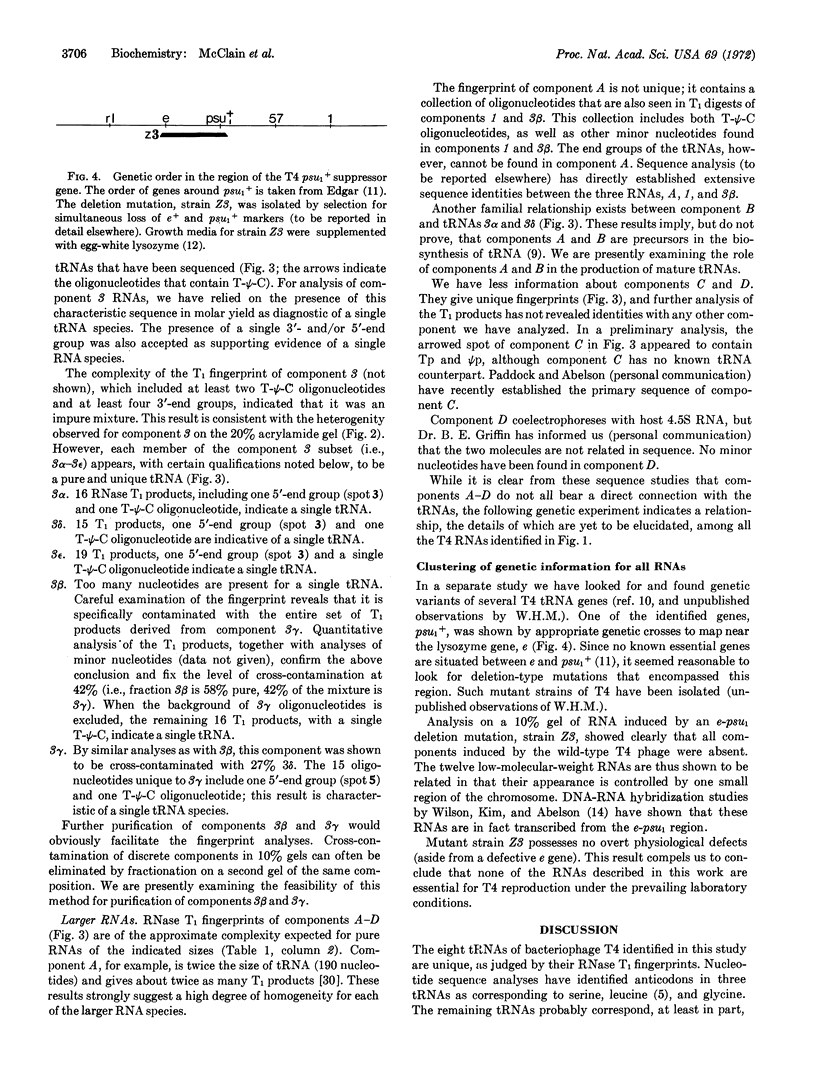

Images in this article
Selected References
These references are in PubMed. This may not be the complete list of references from this article.
- Adesnik M., Levinthal C. RNA metabolism in T4-infected Escherichia coli. J Mol Biol. 1970 Mar 14;48(2):187–208. doi: 10.1016/0022-2836(70)90156-7. [DOI] [PubMed] [Google Scholar]
- Altman S. Isolation of tyrosine tRNA precursor molecules. Nat New Biol. 1971 Jan 6;229(1):19–21. doi: 10.1038/newbio229019a0. [DOI] [PubMed] [Google Scholar]
- Daniel V., Sarid S., Littauer U. Z. Bacteriophage induced transfer RNA in Escherichia coli. New transfer RNA molecules are synthesized on the bacteriophage genome. Science. 1970 Mar 27;167(3926):1682–1688. doi: 10.1126/science.167.3926.1682. [DOI] [PubMed] [Google Scholar]
- McClain W. H. UAG suppressor coded by bacteriophage T4. FEBS Lett. 1970 Jan 26;6(2):99–101. doi: 10.1016/0014-5793(70)80011-4. [DOI] [PubMed] [Google Scholar]
- STREISINGER G., MUKAI F., DREYER W. J., MILLER B., HORIUCHI S. Mutations affecting the lysozyme of phage T4. Cold Spring Harb Symp Quant Biol. 1961;26:25–30. doi: 10.1101/sqb.1961.026.01.007. [DOI] [PubMed] [Google Scholar]
- Scherberg N. H., Weiss S. B. T4 transfer RNAs: codon recognition and translational properties. Proc Natl Acad Sci U S A. 1972 May;69(5):1114–1118. doi: 10.1073/pnas.69.5.1114. [DOI] [PMC free article] [PubMed] [Google Scholar]
- Smith J. D., Barnett L., Brenner S., Russell R. L. More mutant tyrosine transfer ribonucleic acids. J Mol Biol. 1970 Nov 28;54(1):1–14. doi: 10.1016/0022-2836(70)90442-0. [DOI] [PubMed] [Google Scholar]
- Zachau H. G. Transfer ribonucleic acids. Angew Chem Int Ed Engl. 1969 Oct;8(10):711–727. doi: 10.1002/anie.196907111. [DOI] [PubMed] [Google Scholar]





